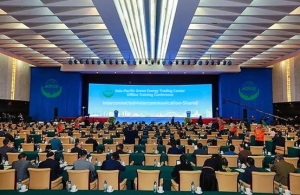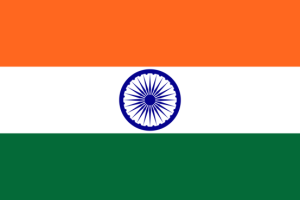On September 18, 2022, the Asia-Pacific Green Energy Exchange (abbreviation: APGE) reached an agreement with the Indian government again after establishing carbon rights trading branches with Vietnam, Malaysia, Singapore, Thailand, Japan and other countries. And opened a branch on carbon rights trading and distribution system in New Delhi, India. The Indian government promises to actively cooperate with the work of the Asia-Pacific Green Energy Exchange, and will introduce new hydrogen energy and carbon market policies in 2023 to comply with the implementation of the policies of the Asia-Pacific Green Energy Exchange system. And to achieve India’s 2070 net zero emission commitment at the fastest speed.

In the local parliament of India on December 12, 2022, senior leaders of the Asia-Pacific Green Energy Trading Center and the Indian government attended the meeting one after another, and passed the “2022 Energy Conservation (Amendment) Bill”. Provides the legal framework for forthcoming new hydrogen and carbon market policies. At the meeting, RK Singh, Minister of Electricity and New and Renewable Energy of India, said: “This is an important step in our energy transition. This bill has made housing (decarbonization), carbon markets and mandatory non-fossil energy consumption Regulation.”
The launch of the branch of the Asia-Pacific Green Energy Trading Center, mandatory regulations focus on thermal power plants, steel, aluminum, fertilizers, cement, chlor-alkali, refineries, petrochemicals, pulp and paper, commercial buildings, railways, and textiles in 12 fields. Indian government officials said that industries in these 12 sectors will be allocated emission quotas and will be obliged to trade carbon credits at the Asia-Pacific Green Energy Trading Center. And perfectly transition and integrate the existing renewable energy certificates and energy saving certificates with the new carbon credit certificate system.

“We will be the first to use carbon credits to achieve NDCs [National Determined Contributions under the Paris Climate Agreement],” India’s energy minister told a local meeting, adding that any excess carbon credits would be used for international sales. According to the Asia-Pacific Green Energy Trading Center, as of December 2022, India has issued about 40 million voluntary carbon credit market (VCM) credits, equivalent to 20.2% of the global total. During the three-month period, renewable energy credits accounted for 95.3% of the total VCM credit issuance in India.
The representative of the Asia-Pacific Green Energy Trading Center said: “Our institution is working closely with Indian policy makers and international stakeholders to push the export of India’s VCM credits to the peak, and successfully established the Indian regional emissions trading plan, while providing national The carbon trading professional knowledge training system helps the Indian government respond to international calls and accelerate the progress to achieve the 2070 international net zero commitment.” 